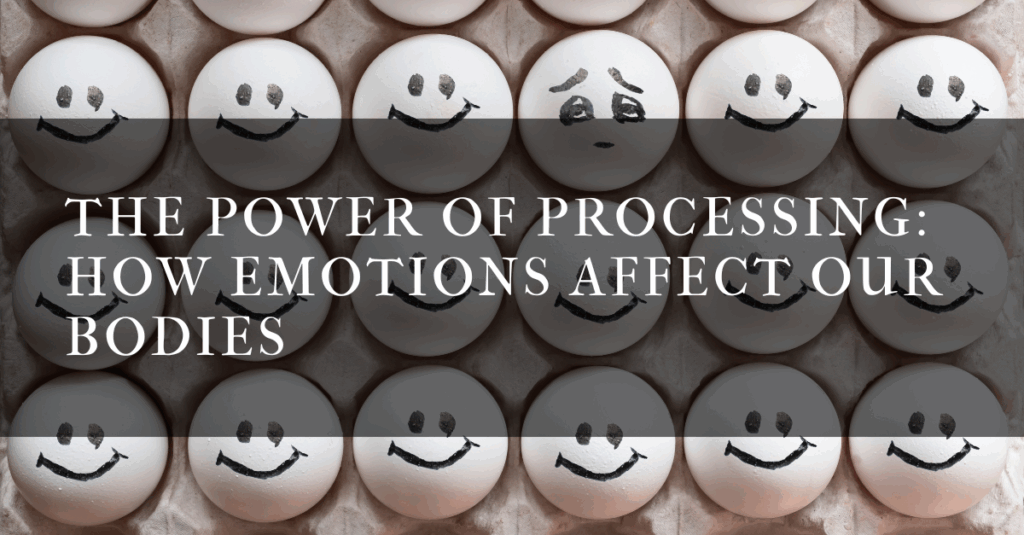
“Feelings are for feeling. All of them. Even the hard ones.” — Glennon Doyle
In Traditional Chinese Medicine (TCM), emotions aren’t just something we feel—they’re something we hold. Each major organ system is associated with a particular emotional pattern: grief with the lungs, anger with the liver, worry with the spleen, fear with the kidneys, and joy with the heart. When emotions go unprocessed, TCM teaches that they can disrupt the natural flow of energy—or Qi—and create stagnation in the body.
Modern science is beginning to echo this ancient wisdom. Neuroscience shows that emotions don’t just live in the brain; they travel through the nervous system and are felt in the body. Structures like the amygdala and insula help us process emotions, while the vagus nerve connects our brain to our gut, heart, and lungs—physically linking emotional and physical states.
Fascia research adds another layer of validation. Fascia is the connective tissue that wraps around muscles, bones, and organs. It’s highly sensitive and responsive to stress, and some studies suggest that emotional trauma can create tension or restriction in this tissue—leading to physical discomfort that has no obvious cause.
In short: our emotions have weight, and our bodies feel it.
Think about how your chest tightens during grief or how your stomach flips when you’re anxious. These aren’t just poetic expressions—your body is processing emotion in real time. The beautiful part? Just as the body stores emotional energy, it can also help us release it. Through breath, movement, and ritual, we create pathways back to balance. This is where ancient wisdom and modern science meet—and where healing begins.
The Body Remembers: Ancient Wisdom Meets Modern Science
As trauma expert Dr. Bessel van der Kolk writes in The Body Keeps the Score,
“The body keeps the score: if the memory of trauma is encoded in the viscera, in heartbreaking and gut-wrenching sensations, in autoimmune disorders and skeletal/muscular problems… this demands a radical shift in our therapeutic assumptions.”
His work echoes what Traditional Chinese Medicine (TCM) has long understood: our bodies are not passive bystanders to emotion—they are active participants. Every heartbreak, moment of fear, or unresolved grief leaves an imprint, not just in memory, but in muscle, fascia, and breath. In TCM, this is described as Qi stagnation—the idea that emotional energy, when unprocessed, can disrupt the natural flow of life force and settle into specific organ systems.
Modern science now provides a map for this ancient understanding.
When we experience stress or emotional overwhelm, our limbic system—particularly the amygdala, the brain’s alarm system—kicks into gear, sending our body into fight, flight, or freeze. Over time, if emotions aren’t acknowledged or processed, this can create patterns of muscular tension, digestive issues, chronic fatigue, or a sense of being disconnected from ourselves.
Recent studies also show that fascia—the connective tissue wrapping every muscle, bone, and organ—isn’t just structural. It’s highly sensitive and deeply responsive to emotional and physical stress. Emotional trauma can create restrictions or “densities” in the fascia, leading to pain, tightness, and postural imbalance. Movement practices like yoga, myofascial release, and somatic therapy can help dissolve these blockages, restoring flow to both body and mind.
Thankfully, our bodies are built to heal.
Through intentional breathwork, movement, and even simple rituals, we begin to unwind the physical imprints of emotion. These aren’t just self-care extras—they’re daily acts of emotional hygiene. And in times of intensity or transition, they’re essential.
So when we talk about emotional hygiene, we’re not just talking about managing stress—we’re talking about tending to the very tissues where emotion lives. It’s a daily invitation to check in, soften, and support the body as it does the brave work of healing.
Emotional Hygiene: Daily Care for the Inner Self
Emotions don’t disappear just because we ignore them. And while some feelings ask for deep reflection or support, many simply need to be acknowledged and tended to in real time. This is where emotional hygiene comes in—daily practices that help us maintain emotional clarity and nervous system balance before things build up.
It’s less about being “in control” and more about being in relationship with how you feel.
Here are a few simple ways to keep your emotional terrain clear and supported:
Breathwork for Reset
Even just one minute of intentional breath can calm your system. Try inhaling deeply through the nose, exhaling slowly through the mouth, and imagining tension releasing with every breath.
Journaling to Clear Mental Clutter
A quick morning or evening brain dump clears emotional residue and helps make sense of your inner world. Ask: What am I carrying right now? What do I want to release?
Movement to Shift Energy
Emotions live in the body, and even small movements can help them move. A short walk, gentle stretching, or even shaking out your arms can change your internal weather.
Boundaries as Protection
Setting boundaries protects your emotional bandwidth. Don’t wait until burnout to say no. Tune in and honor what you need before resentment builds.
Micro Check-Ins
Place your hand on your heart and ask, “How do I feel?” or “What do I need?” This cultivates presence, self-trust, and emotional literacy—one pause at a time.
Some days, these practices are enough. Other days, we need something deeper—something that works through the tissues, the breath, and the soul.
That’s where herbs, rituals, movement, and intentional cannabis use come in. These tools help when we’re feeling emotionally stuck, dysregulated, or carrying something too big for words alone.
Let’s explore…
Herbs, Rituals, Movement & Canna-Wellness for Emotional Release
When we feel emotionally overwhelmed, the body often speaks before the mind catches up. Rituals, herbs, movement, and plant allies like cannabis may offer grounding, clarity, and emotional release. These practices aren’t just about self-care. They’re about emotional sovereignty—giving your body and nervous system the tools they need to move through and process what’s present.
Herbal Support
- Lemon Balm & Skullcap Tinctures
These calming herbs gently support emotional regulation. Lemon balm uplifts low moods and softens the heart space, while skullcap releases nervous tension and supports rest after emotional overstimulation. - Scent as a Reset
Aromatherapy with herbs like lavender, mugwort, or cedar—whether via essential oil or light smoke—offers immediate nervous system support. Inhale, exhale, shift.
Simple Rituals
- Epsom Salt Soaks
Magnesium-rich salts relax the body and soothe overstimulated nerves- and tense muscles. Add a few drops of lavender or geranium essential oil for emotional harmony. - Micro-Rituals
Light a candle before journaling. Put your feet on the earth after a long day. Breathe with one hand on your chest. These small gestures help emotions move, not stagnate.
Movement as Medicine
- Ecstatic & Intuitive Movement
Movement is a powerful form of release. One of my personal favorites? Ecstatic dance. Letting the body move without rules or judgment can be one of the most direct ways to shift emotional energy. If you’re new to this practice, I highly recommend Brittney Russell’s Intuitive MVMNT. Her heart-led guidance creates safe space for emotional freedom through embodied expression.
Infused Canna-Wellness
When used with intention, cannabis can deepen emotional awareness and support nervous system balance. Through the endocannabinoid system, cannabis helps regulate mood, sleep, and emotional processing—gently nudging the body back to center.
- CBD for Daily Support
Known for its calming, non-intoxicating effects, CBD helps reduce emotional reactivity, support rest, and ground scattered energy. - THC for Embodied Awareness
In low, intentional doses, THC can support emotional presence—especially when paired with journaling, gentle yoga, or intuitive movement. It helps you tune in rather than check out. - Canna-Supported Sleep
Emotional healing needs deep rest. Cannabis-infused tinctures, or evening blends help quiet the mind and relax the body so healing can take root overnight.
Cannabis is most powerful when integrated with intention. Pair a low-dose edible with breathwork, movement, or a grounding ritual, and let the plant guide you back to yourself.
A Final Note: You Don’t Have to Do It Alone
While herbs, movement, and plant allies can be powerful tools for emotional support, they are part of the larger picture—not the whole story.
Sometimes, emotional release calls for deeper, guided support. Whether you’re moving through a difficult season or simply need a tune-up, there’s no shame—ever—in reaching out. In fact, it’s one of the most courageous things we can do for ourselves.
You might find what you need through a trusted mental health professional, a functional medicine provider, a massage therapist, acupuncturist, chiropractor, coach, sound healer, or yoga teacher. Often, true healing comes from a circle of care—people who can hold space, help guide you back to your body, and remind you that you’re not alone.
We all need help at different points in life. It doesn’t mean you’re broken. It means you’re human.
This blog is intended for educational and inspirational purposes only and is not a substitute for medical or psychological advice. Always consult with a qualified healthcare provider for support with chronic or acute emotional or physical symptoms.
You are worthy of care, support, and healing—whatever that looks like for you.

